Want to double your focus without adding stress—will the Pro turn your to‑do list into triumphs or is the Classic the simple secret your routine needs?
Ready to tame your chaos? This guide helps you choose the Panda Planner that fits your daily rhythm, giving a clear snapshot of the Pro and Classic so you can pick the one that supports your goals, focus, and schedule.
Deep Planning
You get a roomy, well-built planner that prioritizes deep planning and reflection so you can time-block, track habits, and review progress in detail. If you need a durable, high-capacity organizer to reduce overwhelm and support focused routines, this format gives you the space and structure to do it.
Everyday Carry
You’ll appreciate the Classic for everyday portability and straightforward planning that helps you stay consistent without bulk. If you want a durable, reasonably priced planner to carry daily and maintain habits, this version balances features and convenience well.
Panda Pro Large
Panda Classic Cyan
Panda Pro Large
Panda Classic Cyan
Panda Pro Large
Panda Classic Cyan
At-a-Glance: Key Differences and Who Each Planner Is For
Headline differences
You’ll notice the Pro gives you a bigger canvas and deeper productivity tools, while the Classic keeps things compact and academic-friendly. The Pro is a large 8.5″x11″ planner built for detailed daily planning and extended tracking; the Classic is a smaller, easy-to-carry academic format (about 5.75″x8.25″) made for semester flow and everyday portability.
What each model emphasizes
Pro (Dark Green)
Classic (Cyan Blue)
Quick practical notes
Layouts, Sections and Features: What You’ll Use Daily
Daily layouts & time-blocking (Pro)
The Pro gives you a full 8.5″x11″ daily spread built for detailed time-blocking: dedicated priority slots, an hourly schedule, focused “time-block” sections, and large note areas to break projects into steps. Its habit tracker runs across the week with room for multiple habits, and reflection prompts at the bottom help you link daily actions to bigger goals. If you rely on long-form planning, Pomodoro-style focus sessions, or need space to map meetings + project steps, the Pro keeps everything visible at once.
Classic daily & weekly academic flow
The Classic uses a compact daily/weekly balance: shorter daily blocks and a clear weekly view that fits semester planning. Daily pages include priorities, top tasks, and quick reflection prompts, while the weekly spreads give you at-a-glance deadlines and class schedules. Monthly calendars are roomy enough for term milestones and exam weeks. You’ll trade some note room for portability and easier daily carry.
Habit trackers, goals & weekly reviews
To-dos, gratitude, and focus prompts — practical use
Which layout fits your work style
Feature Comparison Chart
Size, Build, and Everyday Usability
Footprint & portability
The Pro is a true desk planner: 8.5″ x 11″ (11 x 8.5 x 1 in) gives you a roomy writing surface for long lists, meeting notes, and time-blocking. The Classic is a compact academic size (about 5.25″ x 8.25″, 0.75″ thick) that slips into backpacks, tote bags, and small briefcases. If you carry a planner everywhere, the Classic is easier; if you mostly plan at a desk, the Pro feels luxurious.
Quick size and weight facts
Cover, binding, and paper
Both use vegan/faux leather covers and sturdy binding. The Pro specifies sewn binding and 100 GSM paper—this combination lies flatter and resists bleed-through with heavier inks. The Classic uses a durable binding and thick paper appropriate for daily use, but it has less margin space and a smaller note area.
Readability & pen feel
The Pro’s larger layout gives you more generous spacing and larger areas for handwriting, so your entries look neater and are easier to scan. The Classic compacts fonts and fields to fit more on each page—fine for quick notes, tighter for longhand. For pens: the Pro’s 100 GSM handles gel pens, rollerballs, and most fountain pens with minimal ghosting; the Classic works best with ballpoint or light gel pens.
Durability over a year
Expect the Pro to withstand heavy use (desk wear, frequent note-taking) longer thanks to sewn binding and thicker paper. The Classic holds up well for daily carry but may show corner wear if tossed in and out of bags constantly.
Travel, pockets & markers — practical pointers
Neither listing explicitly promises internal storage pockets or multiple ribbon markers—if pockets or extra ribbons matter, double-check the Amazon product page or add an adhesive pocket and a sticky tab/ribbon for on-the-go organization.
Which Planner Fits Your Routine: Scenarios & Quick Recommendations
Deep work / Time-blocking
Academics / Semester planning
Family logistics / Household management
Creative workflows / Projects
Quick buying cues
Value, undated advantage, and try-it tips
Final Verdict: Pick the One That Matches Your Day
Choose the Panda Planner Pro as the clear winner if your routine centers on focused work, heavy goal-tracking, and multi-section planning. Its larger 8.5×11 pages, expanded productivity tools, and desk-friendly layout remove friction for deep weekly reviews, habit tracking, and time-blocking so you actually follow through.
Pick the Panda Planner Classic when you need portability, a balanced daily/weekly/monthly academic layout, and something that fits in your bag for classes or shifts. It’s ideal for students or commuters who want structure without bulk. Order the one that removes friction so you use it every day.


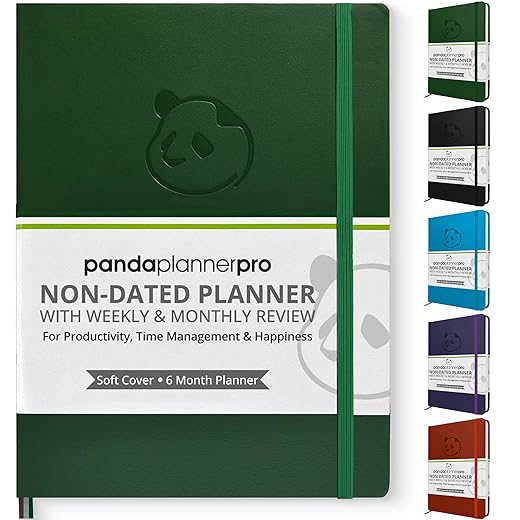
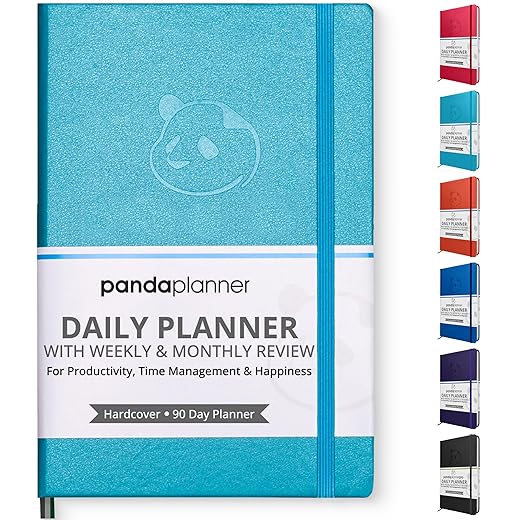
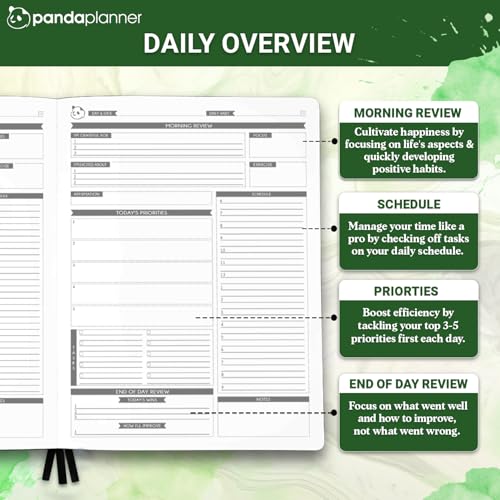
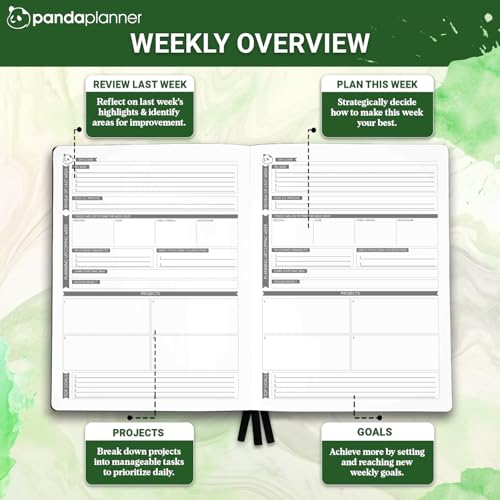
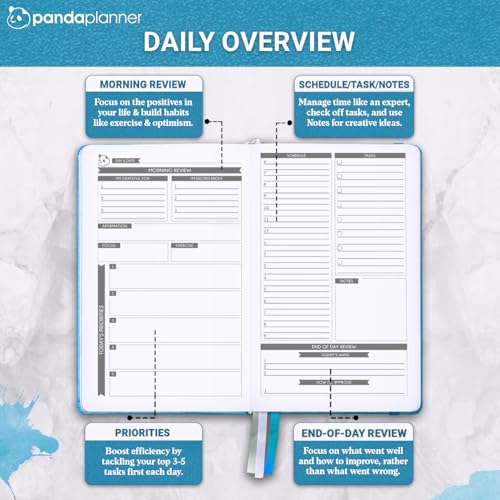
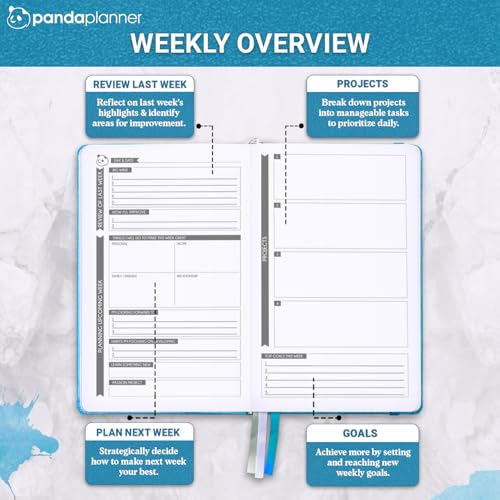
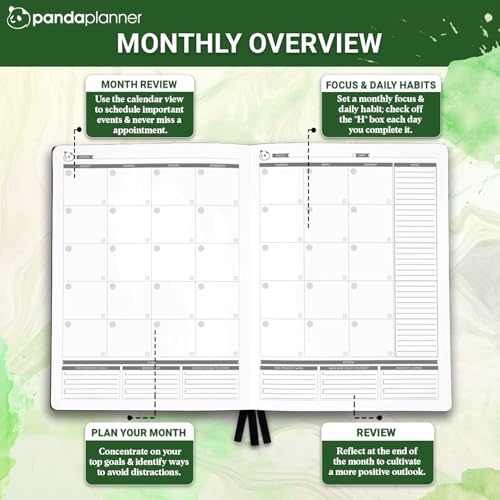
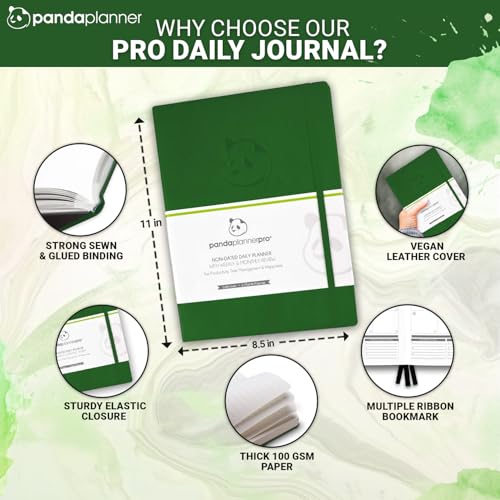
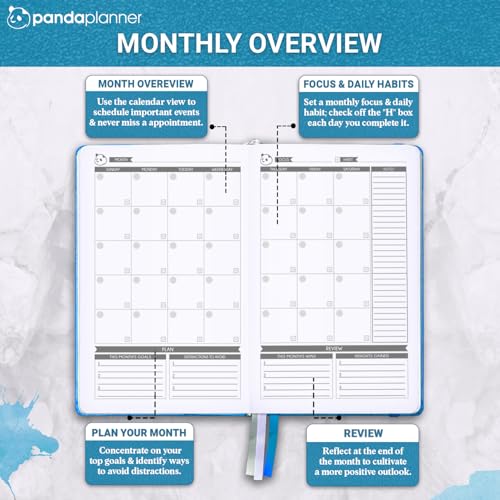
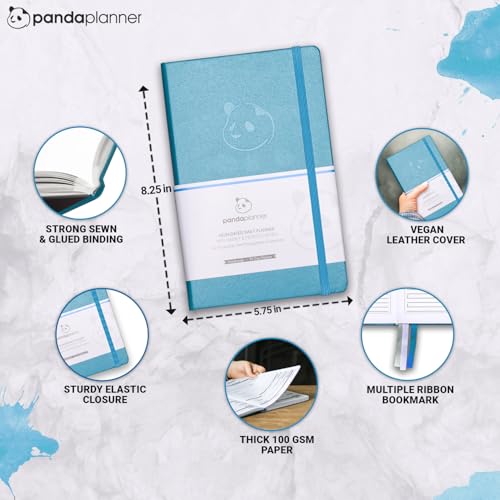



I went with the Pro (dark green) last month and honestly it changed my workflow. The 8.5×11 size is great for spreading out a big weekly view + detailed daily tasks. Habit tracker and the focus sections actually keep me from doom-scrolling during lunch.
Only gripe: it’s a little bulky to carry to coffee shops. But for at-home planning it’s perfect. If you like writing lots and time-blocking, choose Pro.
This is exactly what I wanted to hear. Do you use the monthly spreads much, or mainly the daily pages?
Mostly daily + weekly for me. Monthly I use for high-level goals and deadlines, but the daily page is where the magic happens.
Thanks for sharing, Emma — glad it’s working for you. Good point about portability: that’s a trade-off we noticed too between Pro and Classic.
I compared both side-by-side in store. The Pro’s layout forced me to actually write down a ‘top priority’ each day which reduced decision fatigue.
Price-wise the Pro is a bit more expensive, but if you treat planning as an investment (I do), the returns are real.
If budget is tight: Classic covers the basics. If you want systems and prompts built-in: Pro.
Also, Pro’s darker cover hides wear better — tiny practical thing, but I liked it.
Thanks for that store comparison, Hannah. The ‘top priority’ prompt is something we highlight because it helps with prioritization.
Agree on the cover — my Classic got scuffed in a backpack and looked sad. Pro seems more resilient.
Yep — just small comforts that add up. If you buy on sale, Pro becomes an easy call.
Quick question — does the Classic (cyan) include habit trackers on the daily layout like the Pro? The article made it sound like the Pro has more focus features.
I owned the Classic last year — it has a simple habit tracker, but if you’re serious about tracking many habits the Pro is better.
Good question, Liam. The Classic has basic habit tracking and daily prompts, but the Pro adds expanded sections for focus, priority blocks, and a more detailed habit tracker.
I considered both and ended up with the Pro for my desk. The time management templates are way more useful than I expected.
The build quality feels premium, papers handle fountain pens okay, and the weekly review prompts are gold for reflection.
If you run weekly sprints or juggle multiple projects, Pro > Classic. But if you’re mostly tracking classes or a simple schedule, the Classic keeps things light.
Great breakdown, Lucas. We highlighted the weekly review prompts in the article because a lot of users reported better consistency with them.
Does the Pro have perforated pages or extras like stickers? Trying to decide if the upgrade is worth it.
I like the Classic for quick note-taking between meetings, but I do miss the Focus Organizer in the Pro.
The layout differences: Pro has priority blocks + hourly-ish time blocks; Classic is more about day/lecture slots. If you need to chunk deep work, Pro is better. If you need quick agenda + calendar, Classic = win.
Also small note: the cyan dye slightly bleeds with heavy gel pens, so test your pen! 😬
Great practical observation about inks — we’ve heard similar feedback. We’ll add a note advising readers to test pens on a back page.
Fine-liners saved me too. Felt-tips = nope on the cyan paper.
Also paper weight matters — Pro usually has thicker paper which helps with bleed.
Thanks for the pen tip. I use a fine-liner without any bleed in either version so YMMV.
Cyan vs dark green: it’s the wardrobe decision of planners. 😆
Bought the Classic because I needed something lightweight. Works well for commute days and fits in my satchel. Pro looks like an office binder — big energy.
Would you say Classic is better for commuters even if you do want habit tracking?
Haha, style choices are underrated. Glad the Classic fits your commute — portability is a key deciding factor for many readers.
I swapped from Classic to Pro mid-year. The extra space and goal sections make it so much easier to plan long-term. Highly recommend for people who like to track progress visually.
Yeah, Pro feels sturdier overall. Covers are tougher; I travel with it in a sleeve.
Good to know. We’ll consider adding a short ‘how readers use it’ section to the article with examples like yours.
Thanks for the input, Ava. Could you say more about how you use the goal sections? Readers might appreciate an example.
Nice — that sounds like a mini-GTD system. Did you notice the Pro lasting longer (paper wear) than Classic?
Sure — I break a 3-month goal into weekly milestones, then list micro-tasks on the daily. Seeing the tiny wins keeps me motivated.
Honestly, the cyan color sold me. 😂 But also I’m a student so the Classic’s academic layout fits my schedule. Pro sounds like a grown-up’s tool for spreadsheets and life admin.
Pro tip: if you want the Pro features but a smaller size, check for any mid-size versions or printable inserts people share online.
Haha, color matters! The Classic is designed with students in mind (academic dates, class planning), whereas Pro is geared more to professionals and heavy goal trackers.
Yep — also cheaper usually, which is perfect for broke students 😉
As a TA, I used the Classic through grad school. The cyan felt less ‘intimidating’ than the big green Pro when carrying it into lecture halls.